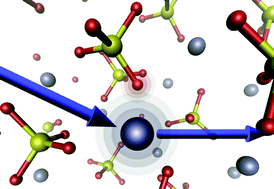The barium giant dipole resonance in barite: a study of soft X-ray absorption edges using hard X-rays†‡
Abstract
Giant dipole resonances are collective phenomena which can be found in systems ranging from atoms through clusters to solids. In atomic and solid state physics such excitations are usually studied by soft X-ray absorption, photoelectron and electron energy-loss spectroscopies. With the advent of third-generation synchrotron radiation sources, nonresonant inelastic X-ray scattering became a prominent tool to study truly bulk sensitive shallow absorption edges with high energy

- This article is part of the themed collection: Synchrotron Radiation

 Please wait while we load your content...
Please wait while we load your content...